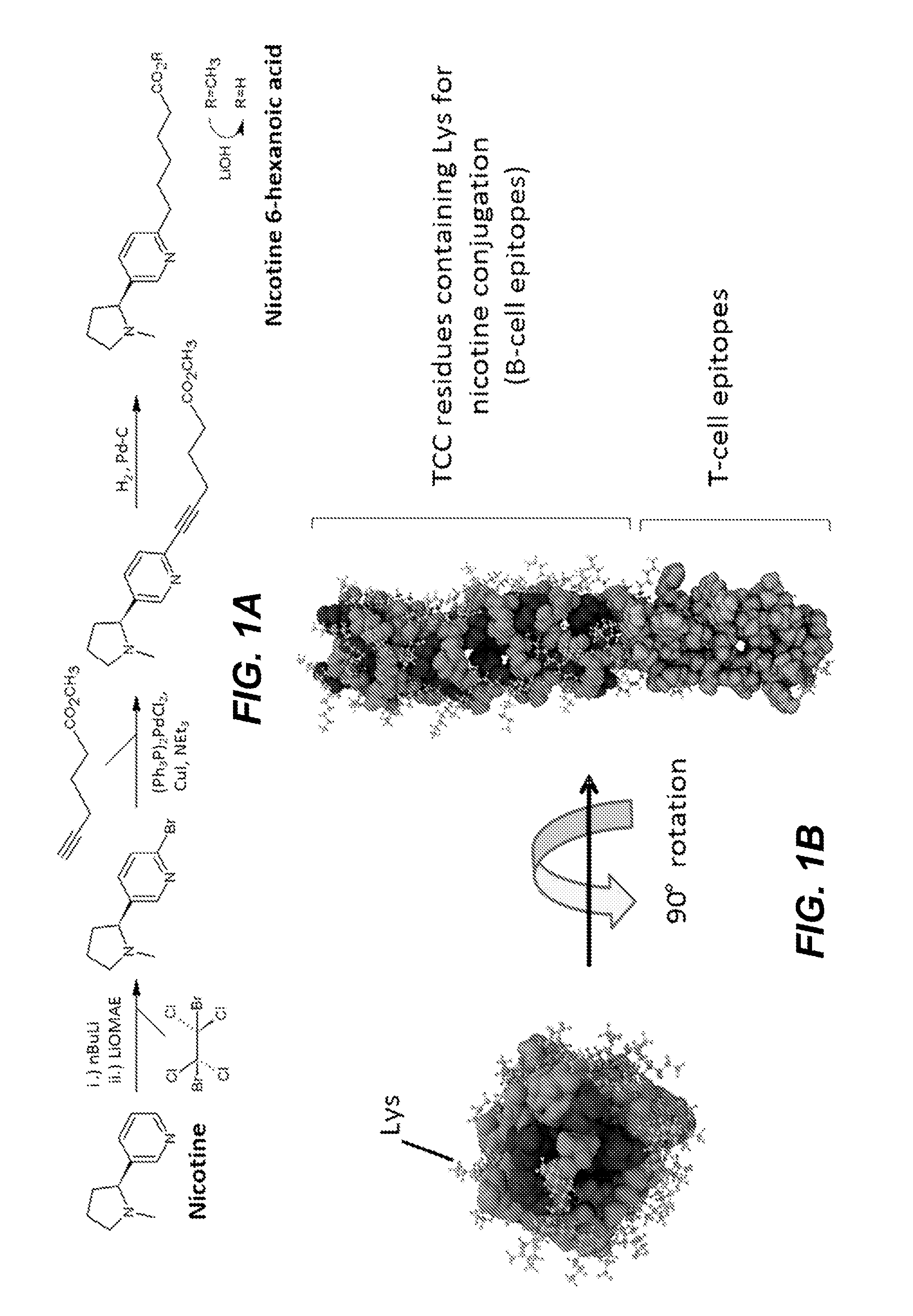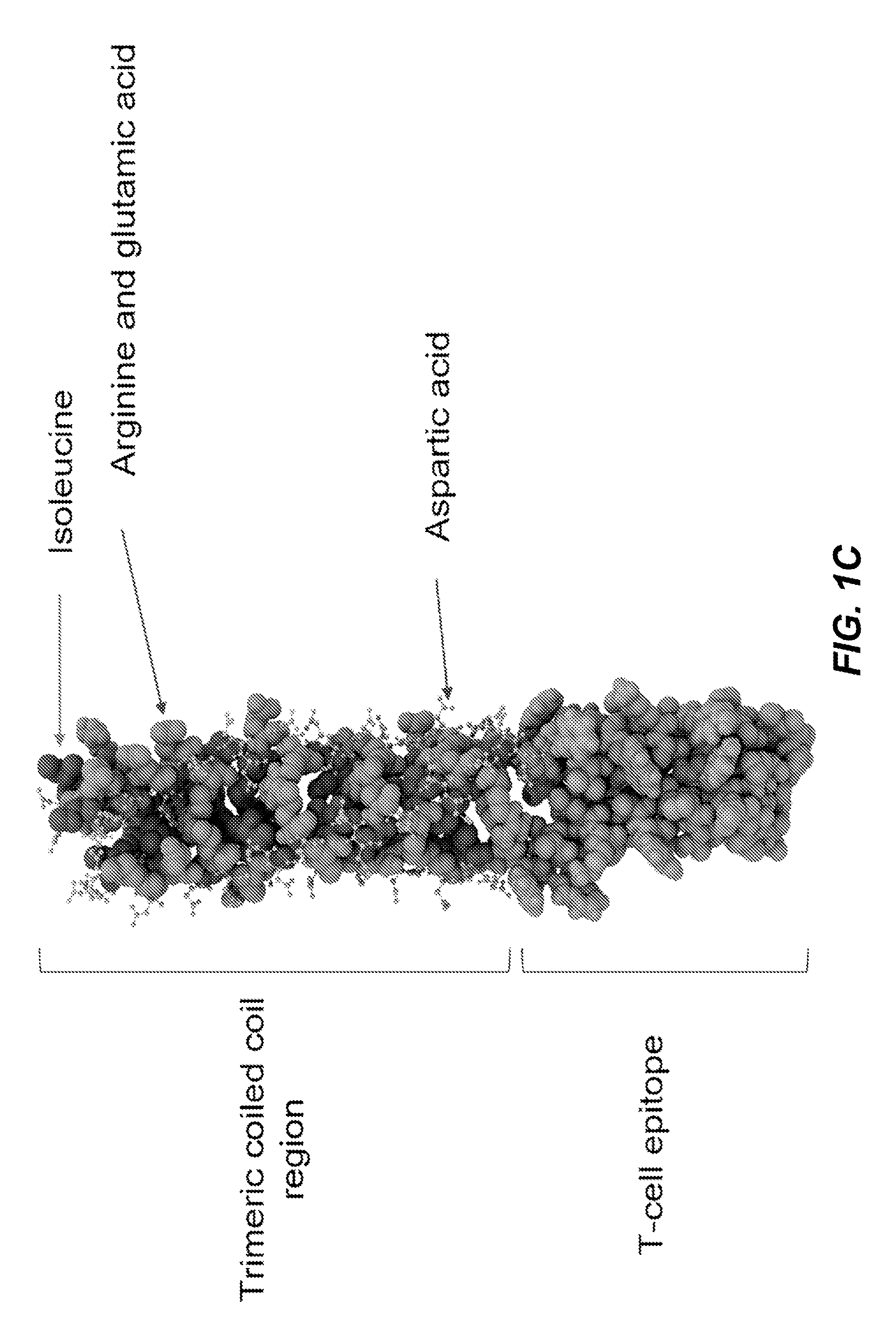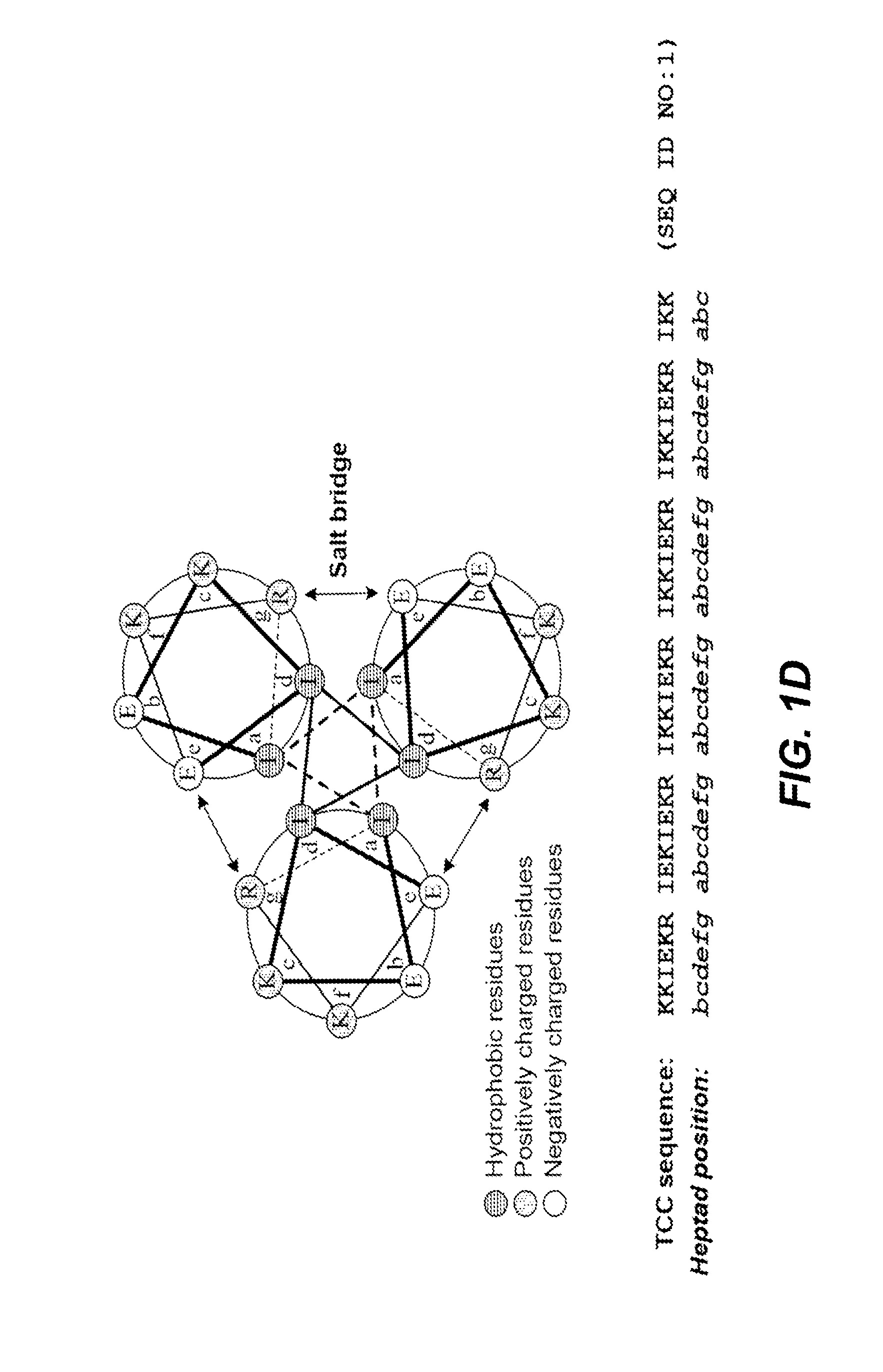Synthetic hapten carrier compositions and methods
a carrier composition and hapten technology, applied in the field of peptide monomers, dimers, trimers, can solve the problems of ineffective immunogens themselves, health risks and economic burdens for society and health care systems associated with smoking, and the clear and undeniable effects of health risks and economic burdens on society and health care systems
- Summary
- Abstract
- Description
- Claims
- Application Information
AI Technical Summary
Benefits of technology
Problems solved by technology
Method used
Image
Examples
example 1
Preparation of Trimeric Coiled Coil Conjugates
[0152]A 37 and 65 amino acid amphipathic α-helical peptide (SEQ ID NOS: 1 and 2) were synthesized (Biosynthesis, Inc., Lewisville, Tex.) with 16 or 26 surface-exposed lysines, respectively. An amphipathic α-helical peptide (SEQ ID NO: 1) was linked in tandem to a pan HLA DR binding epitope (PADRE) (SEQ ID NO:10) (see, e.g., La Rosa et al., 2012, J. Infect. Dis. 205:1294-304) that in turn was linked to an influenza virus subtype A H5N1 hemagglutinin peptide MHC Class II epitope (SEQ ID NO:6) (see, e.g., Clegg et al. 2012, Proc. Natl. Acad. Sci. USA 109:17585-90). The amino acid sequence of this amphipathic α-helical peptide / PADRE epitope / CD4+ T cell hemagglutinin peptide epitope has 62 amino acids and is set forth in SEQ ID NO:13.
[0153]The amphipathic α-helical peptides of SEQ ID NO:1 and SEQ ID NO:2 were also each tandemly linked to an OVA-derived H2Dd restricted T cell epitope (SEQ ID NO:7; see, e.g., Sant et al., 2013, Front. Immunol. ...
example 2
Trimeric Coiled-Coil-Nicotine Constructs Induce High Nicotine-Specific Antibody Titers
[0156]Trimeric coiled coil structures comprising three peptide monomers having an amino acid sequence set forth in SEQ ID NO:13 were conjugated as described above with nicotine to provide constructs comprising an average of 0.6, 4, and 14 nicotine molecules per monomeric peptide. These constructs are called TCCNic0.6, TCCNic4, and TCCNic14 herein. C57BL / 6 mice (n=5 / group) were immunized with the TCC constructs or KLHNic22 either alone or with an adjuvant, either Alum or GLA-SE. Mice were immunized at days 0, 14, and 146 with 2.5 μg of the trimeric coiled-coil peptide conjugates. Control groups were administered KLH-Nic22 or PBS. Sera were collected periodically for approximately 20 weeks after the primary immunization, and anti-nicotine antibody titers were determined by ELISA. Representative data, which were generated from the sera of mice immunized with TCCNic4, are presented in FIG. 3. Both adju...
example 3
Antibody Affinity and Nicotine Binding Capacity
[0161]Antibody affinity and the nicotine binding capacity of the anti-nicotine antibodies evoked in TCCNic4-immunized mice were examined. Mice were immunized with 2.5 μg TCCNic4 on days 0, 14, and 146, and antisera were obtained. Nicotine binding to antisera isolated from TCCNic4 immunized mice was determined by competitive ELISA for nicotine, cotinine, and acetylcholine.
[0162]The antibodies induced by immunization (TCCNic4) were nicotine-specific and did not bind physiological concentrations of cotinine, the most abundant metabolite in the nicotine degradation pathway. The antibodies also did not bind to acetylcholine, which is the endogenous nicotine receptor ligand. These data are presented in FIG. 6. IC50 values for cotinine were 1000-fold greater than nicotine. IC50 values could not be calculated for acetylcholine due to a lack of inhibition.
[0163]Relative Kd values of serum IgG were determined by competitive ELISA. Dilutions of an...
PUM
| Property | Measurement | Unit |
|---|---|---|
| immunogenic composition | aaaaa | aaaaa |
| size | aaaaa | aaaaa |
| structure | aaaaa | aaaaa |
Abstract
Description
Claims
Application Information
 Login to View More
Login to View More - R&D
- Intellectual Property
- Life Sciences
- Materials
- Tech Scout
- Unparalleled Data Quality
- Higher Quality Content
- 60% Fewer Hallucinations
Browse by: Latest US Patents, China's latest patents, Technical Efficacy Thesaurus, Application Domain, Technology Topic, Popular Technical Reports.
© 2025 PatSnap. All rights reserved.Legal|Privacy policy|Modern Slavery Act Transparency Statement|Sitemap|About US| Contact US: help@patsnap.com



